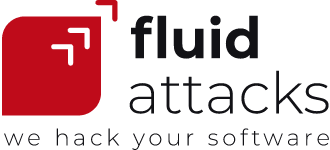| 5 min read
In a previous post from late 2019, Oscar Prado, cybersecurity analyst at Fluid Attacks, touched on the matter of most companies migrating to the cloud. One year later, we indicated a substantial acceleration and growth in that phenomenon, primarily driven by the pandemic and the security measures that emerged as necessary, particularly remote work. It’s true that hosting a business in the cloud offers significant benefits in terms of cost, speed, scalability, maintenance, among others. Nevertheless, there are often issues concerning the security of companies' systems and assets in the cloud, mostly due to a lack of knowledge and confusion about something known as the security shared responsibility model (SRM). Let’s see what’s happening.
What is cloud computing?
As Ranger said on ZDNet, "Cloud computing is the delivery of on-demand computing services —from applications to storage and processing power— typically over the internet and on a pay-as-you-go basis." So now, for example, if you intend to develop and offer a new application, you don’t have to do as before, gradually acquiring software and hardware resources and maintaining your own computing infrastructure. You can save money, time, and effort by paying for web-based services according to your needs. The clouds of companies like Amazon, Microsoft, and Google have incredible amounts of resources pooled in their infrastructures for your benefit while your projects are hosted there. Thus, as its fame grows, for instance, your application can quickly increase its use of cloud servers to satisfy your customers with speed and effectiveness. Yet, it can also easily reduce cloud usage if its popularity ever declines. You then pay strictly for what you need at a specific time.
"Rarely do people mention how security is a benefit of moving to the cloud," said Chaudhry more than two years ago. But why? Indeed, leading cloud service providers (CSPs; AWS is the top cloud, although Microsoft Azure and Google Cloud are growing fast) may possess more experienced and skilled cybersecurity staff than many other companies could ever hire. There’s no doubt that a business working within a cloud has significant benefits in terms of security. However, unknown to many, these are only partial benefits.
What is the SRM?
According to Violino on CSO, for example, "Contrary to what many might think, the main responsibility for protecting corporate data in the cloud lies not with the service provider but with the cloud customer." Cloud security efforts don’t depend on just one of the parties involved. In fact, CSPs subscribe to the globally accepted security SRM, in which they are primarily concerned with the security of physical aspects, infrastructure, network, and virtualization. On the other hand, the customer must always guarantee the security of the user access/identity and data. As shown in Figure 1, the party responsible for protecting the application or the guest OS will vary based on the type of cloud service (IaaS, PaaS, and SaaS; see Figure 2). Besides, some other differences in these delimitations may be the product of the CSPs' particular choices.

Figure 1. Cloud security shared responsibility model (source: Oracle.com).

Figure 2. Types of cloud services (source: Medium.com; see also Ranger’s post.
In research published in 2020, Oracle and KPMG surveyed cloud service subscribers' understanding of SRM. Almost all of their respondents revealed high levels of familiarity with the term SRM. However, only 8% of them said they entirely understand the SRM for every kind of cloud service. The confusion arising from this variable distribution of responsibilities in security matters has led many organizations to overlook several of their obligations inside the cloud or fail to fulfill them adequately. One of the most prevalent implications of such confusion is the misconfiguration vulnerability (which may also be related to a lack of training).
What are these cloud security issues?
A widely known case of misconfiguration was the Capital One data breach in 2019. According to the SRM, a client company’s employees are responsible for the appropriate integration of cloud service platforms. Following Graham’s point, "Engineers that have worked with cloud computing systems have frequently noted that system integrations are not always straightforward." Either because of confusion, incompetence, or both, Capital One personnel left a firewall improperly configured in the process of integrating AWS solutions, allowing the theft of information from more than 100 million credit card customers. In conclusion, Capital One, not AWS, "was held accountable for the monetary loss and time spent fixing the error."
'Data breaches' along with 'Misconfiguration and inadequate change control' are the first two cloud threats that the Cloud Security Alliance (CSA) puts on its Top Threats to Cloud Computing: Egregious Eleven report for the education of organizations. Companies should not only worry about the risk of losing data or intellectual property but also about the risk of their cloud resources being deleted or modified to disrupt business operations. Confusion with cloud responsibilities can also lead to errors involving unauthorized access to data and services. Plus, it can open the door to malware and facilitate the stealing of cloud credentials.
As Nunnikhoven told SecureWorld, the vast majority of cloud service-related incidents have involved problems on the customer side, not the CSP side. Apparently, from Gartner, it’s expected that by next year, "at least 95% of cloud security failures will be the customer’s fault." Still, it’s said that many companies refrain from migrating to the cloud because they perceive considerable security risks. That’s silly. (Although we should never rule out the possibility of catastrophe in the security of CSPs.) According to the above, they could recognize that security is an issue that will be primarily affected by their decisions and actions in both on-premise and cloud infrastructures. But this is something that even multiple companies inside the cloud haven’t figured out.
Recommendations to overcome confusion?
A solution to this problem around the SRM for any company could start with an education geared towards a cultural shift in which all parties involved, all teams, discuss cybersecurity. (Remember, everyone is responsible for 'Sec' if you are following the DevSecOps approach.) Understanding what the cloud is and which security requirements are under your responsibility is of vital importance prior to business migration. (If you are already in the cloud, make sure you understand this). Keep in mind that it's never prudent to let a desire for rapid migration to the cloud take precedence over security. Don't let cybercriminals be the ones to make you and your colleagues aware of your security obligations with their misdeeds.
Of course, without hesitation, establish a conversation with your CSP whenever necessary. Ask them for detailed guidelines on your security responsibilities because they can certainly give them to you. Also, stay informed of updates to those responsibilities since they may be evolving. Bear in mind that it’s always crucial to have robust authentication mechanisms and manage a definite restriction of access to critical data and systems. Likewise, keep threat models up to date and deploy continuous monitoring for configuration errors and vulnerabilities. (Fluid Attacks' red team can help you with that.) Finally, don't forget that if you don't understand and address cloud security in your company’s digital transformation, the next cybersecurity breach could be your fault!
Recommended blog posts
You might be interested in the following related posts.











